The Fukang Meteorite, 4.5 billion years old, crashed into the Gobi Desert in China in 2000, showcasing a spectacular beauty with sparkling golden crystals.
The Fukang Meteorite is the name given to a meteorite discovered in China. The Fukang Meteorite is classified as an iron-rich stony meteorite known as a Pallasite, recognizable by its chaotic arrangement of olivine crystals embedded within a nickel-iron matrix. This unique structure gives slices of the meteorite a stunning appearance, particularly when illuminated from behind.
In fact, a portion of the Fukang Meteorite was recently auctioned off. In February 2021, this piece fetched $30,000 for the seller—far exceeding the initial estimate of $3,500 to $4,500. So, what makes the Fukang Meteorite so special?
Clearly, it is not a “typical meteorite.” Pallasites are an extremely rare type of meteorite. This rarity is due to the fact that most meteorites of this kind burn up in the atmosphere before they can reach the Earth’s surface. It is estimated that only about 1% of Pallasite meteorites that fall to Earth can be preserved upon landing. Therefore, the Fukang Meteorite is often celebrated as one of the greatest meteorite discoveries of the 21st century.
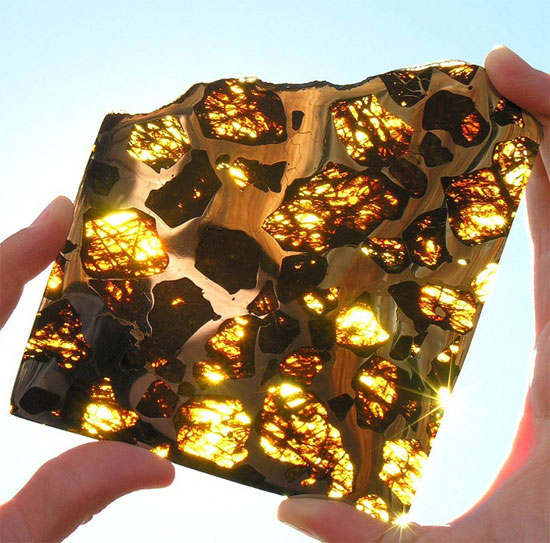
The Fukang Meteorite was discovered in the Gobi Desert, China. It may appear ordinary, but when “dissected,” it reveals perfect beauty and creates stunning color effects when illuminated by sunlight.
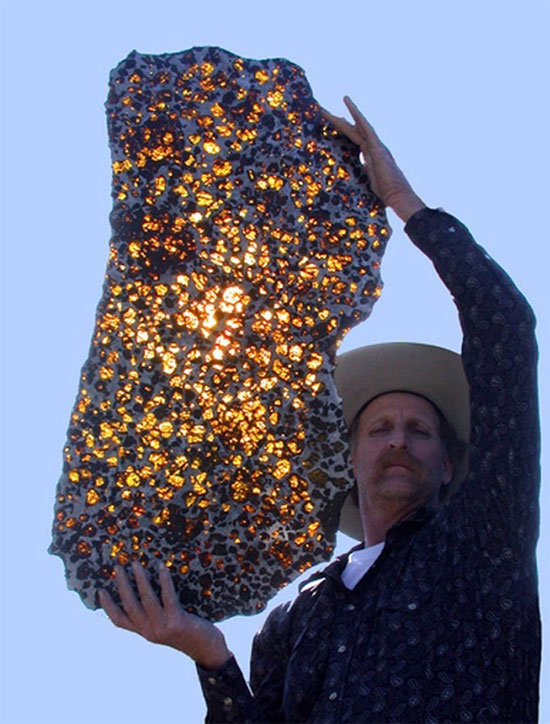
A mountaineer discovered it. Subsequently, this meteorite was divided into several pieces for analysis and auction. It was found that Fukang contains sparkling transparent golden olivine crystals arranged in a honeycomb structure of nickel-iron compounds.
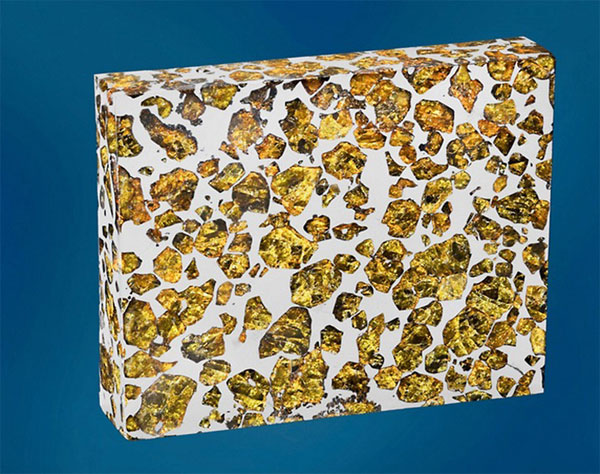
For this reason, it is regarded as the most beautiful celestial object ever seen by humanity.
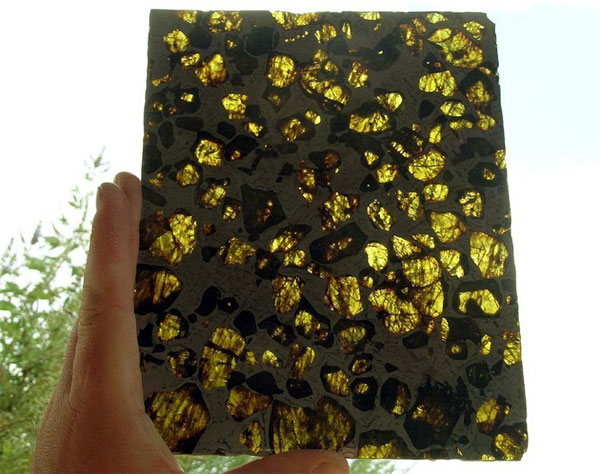
Later, the Fukang Meteorite was divided into dozens of small pieces for auction and distributed to scientists in various countries for research.
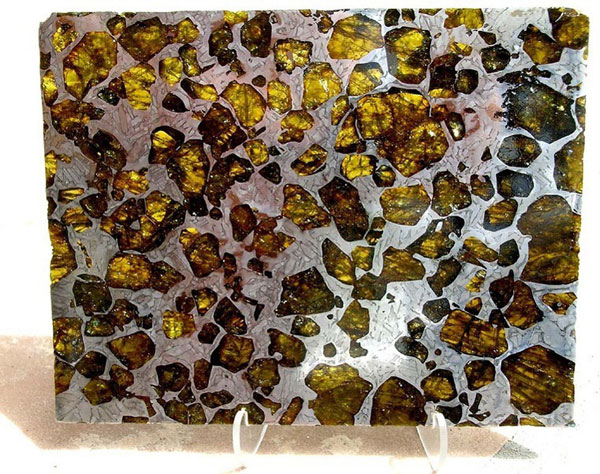
Among these, 31 kg of the meteorite was sent to the University of Arizona.
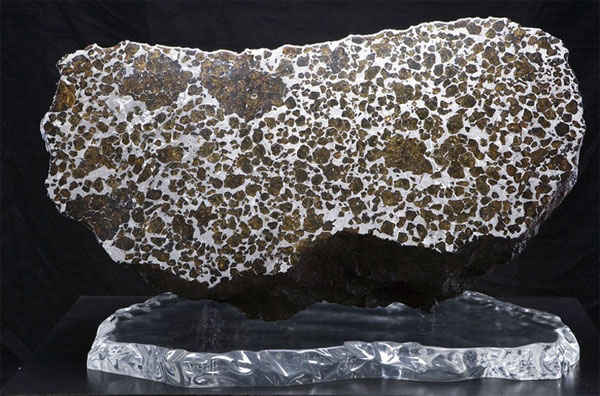
In 2008, a portion of the Fukang Meteorite was auctioned with a starting price of $2,000,000 at Bonhams in New York, USA. Ultimately, it sold for double the initial asking price.
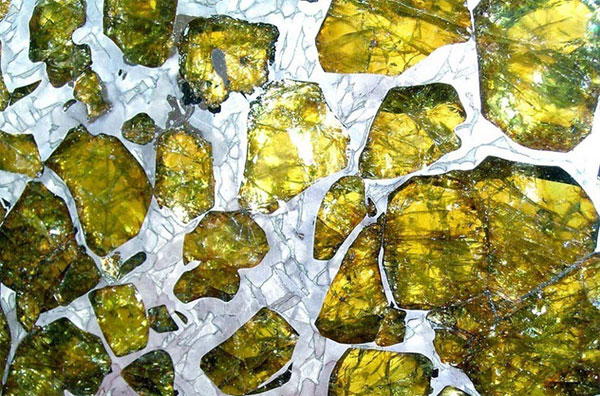
Thanks to its composition of half nickel-iron and half olivine, this meteorite resembles a mystical mosaic stone.
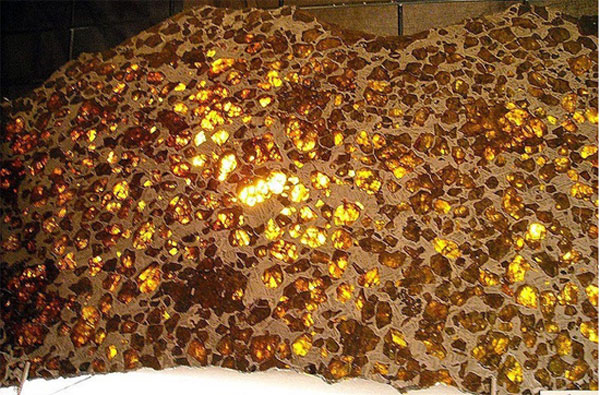
Experts believe that Fukang originates from deep within primitive meteorites.
The exact origin of the Fukang Meteorite, as well as other Pallasites, remains scientifically unverified. However, it is speculated that they originate from an asteroid with a melted metallic core and an olivine mantle surrounding it. The Fukang Meteorite is believed to have formed around 4.5 billion years ago when the solar system was born.
Aside from its rarity, the Fukang Meteorite, like other Pallasites, possesses an incredibly mesmerizing appearance. When light shines through the slices of the Fukang Meteorite, it passes through the olivine crystals, giving the meteorite an alluring glow.
Due to this spectacular beauty, collectors are always eager to own pieces of the Fukang Meteorite. The largest piece of this meteorite weighs 419.5 kg and is currently held by an anonymous collector or collection group. In 2008, this largest piece was auctioned at Bonhams in New York with a starting price of around $2 million.
However, due to its exorbitant price, no one participated in that auction. Nevertheless, smaller slices of this meteorite have been sold at various auctions and distributed worldwide.




















































